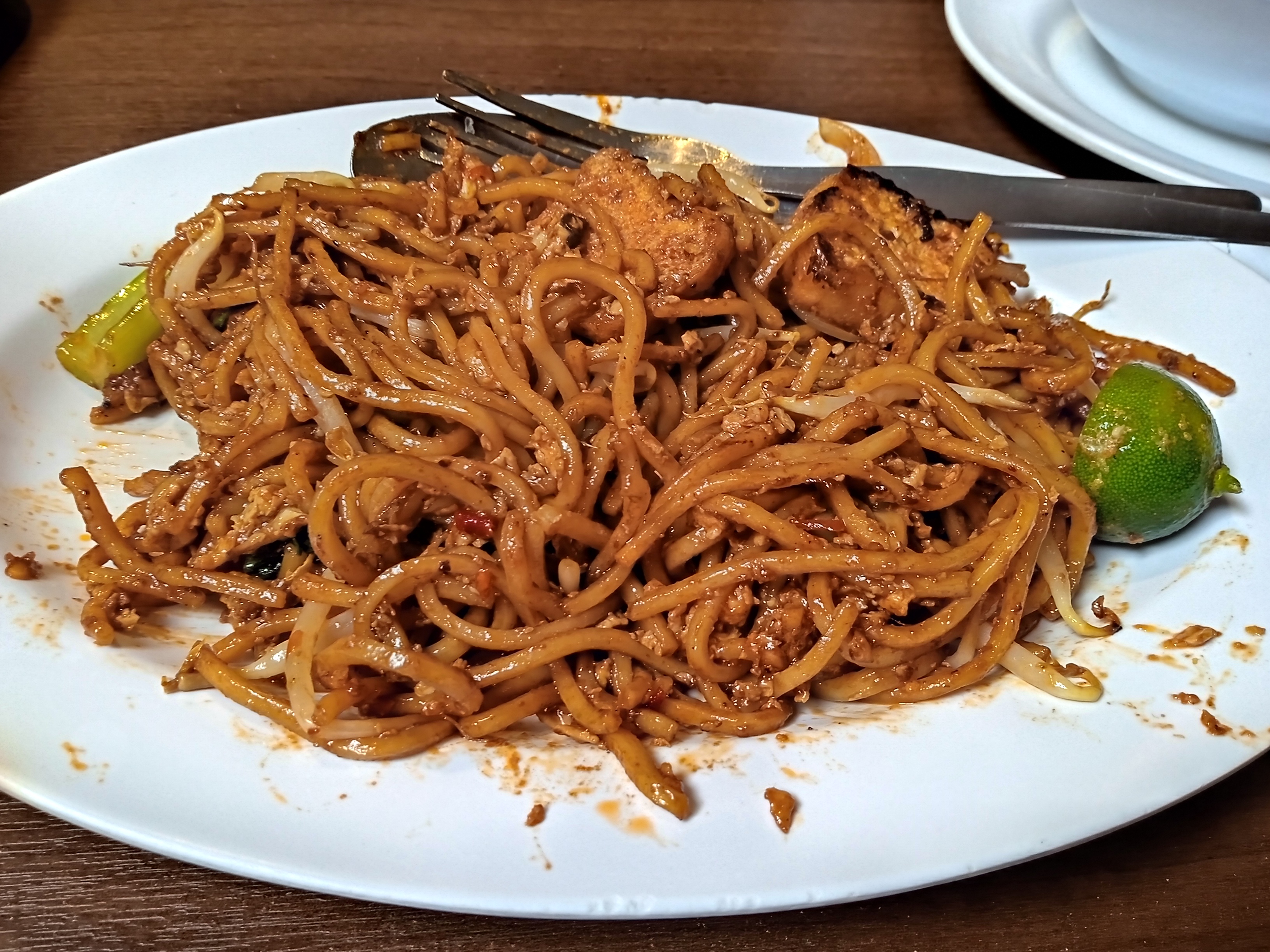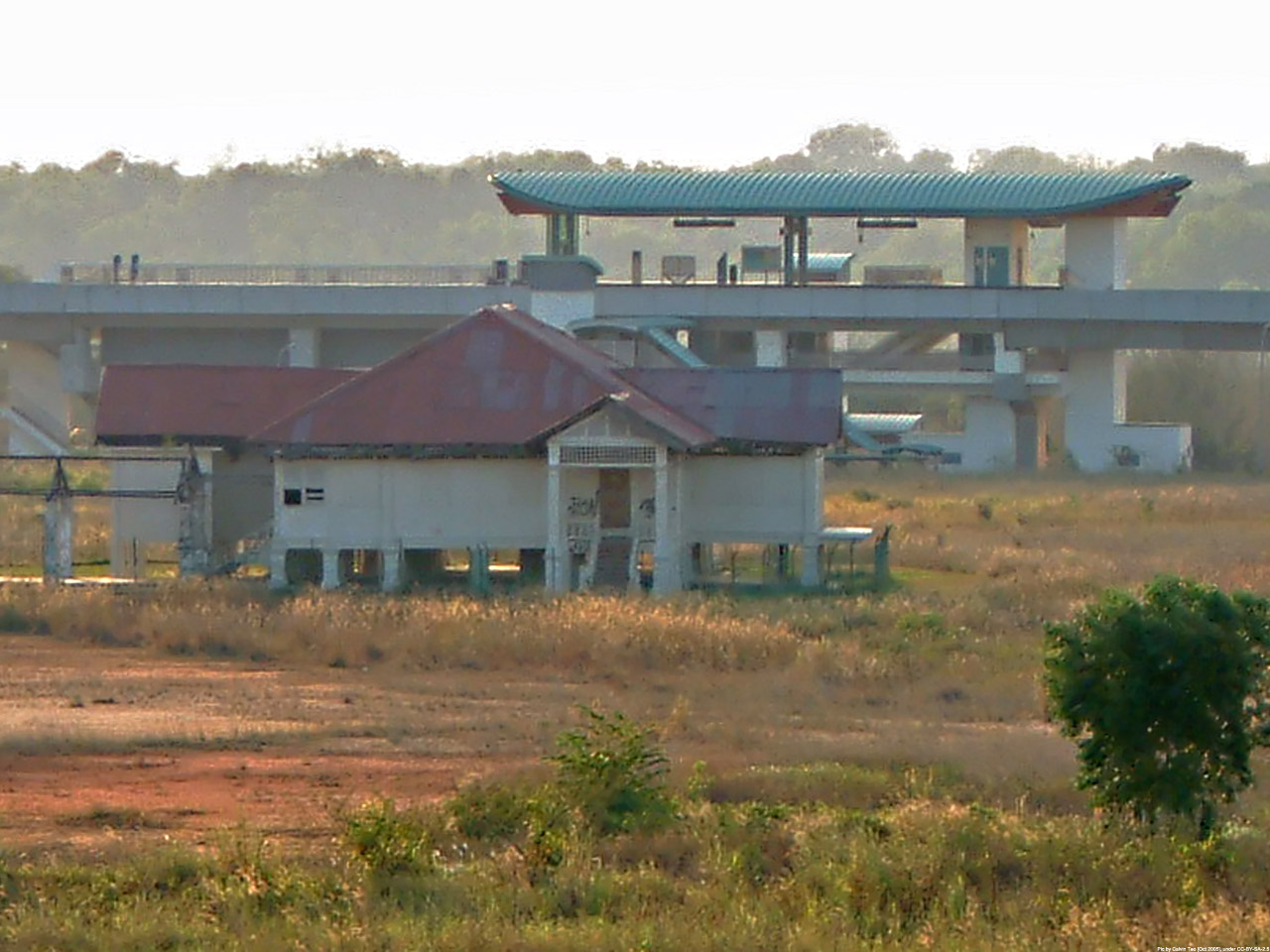|
Mee Goreng
''Mee goreng'', or ''mi goreng'', refers to fried noodles in the Malay-speaking cultures of several countries, such as the Southeast Asian states of Brunei, Malaysia, and Singapore. A notable variant, ''mee goreng mamak'' is associated with Mamak stalls operated by Muslim Indian communities within the region, and is often spicy in taste. Origins Numerous distinct variations of ''mee goreng'' may be found in Brunei, Malaysia, and Singapore. One version is believed to have been developed by Indian immigrants, often of Tamil Muslim origin, who drew influences from other cultures and incorporated them into their cooking. This style of ''mee goreng'' is regarded as a dish unique to the region, as it cannot be found in India. Preparation There is no standard method of preparing ''mee goreng'' or any derivative variant which use other types of noodles, as each dining establishment employs different techniques and ingredients. A typical method may involve stir-frying the noodles ... [...More Info...] [...Related Items...] OR: [Wikipedia] [Google] [Baidu] |
Brunei
Brunei, officially Brunei Darussalam, is a country in Southeast Asia, situated on the northern coast of the island of Borneo. Apart from its coastline on the South China Sea, it is completely surrounded by the Malaysian state of Sarawak, with its territory bifurcated by the Sarawak district of Limbang District, Limbang. Brunei is the only sovereign state entirely on Borneo; the remainder of the island is divided between its multi-landmass neighbours of Malaysia and Indonesia. , the country had a population of 455,858, of whom approximately 180,000 resided in the Capital city, capital and largest city of Bandar Seri Begawan. Its official language is Malay language, Malay, and Islam is the state religion of the country, although Religion in Brunei, other religions are nominally tolerated. The government of Brunei is an absolute monarchy ruled by the Sultan, and it implements a fusion of English common law and jurisprudence inspired by Islam, including sharia. At the Bruneian Emp ... [...More Info...] [...Related Items...] OR: [Wikipedia] [Google] [Baidu] |
Calamansi
Calamansi (''Citrus'' × ''microcarpa''), also known as calamondin, Philippine lime, or Philippine lemon, is a citrus hybrid cultivated predominantly in the Philippines. It is native to the Philippines, parts of Indonesia (Borneo, Sumatra, and Sulawesi), Malaysia, and Brunei, as well as Taiwan, and parts of southern China. Calamansi is ubiquitous in traditional Philippine cuisine. It is naturally very sour, and is used in various condiments, beverages, dishes, marinades, and preserves. Calamansi is also used as an ingredient in Malaysian and Indonesian cuisines. Calamansi is a hybrid between kumquat (formerly considered as belonging to a separate genus ''Fortunella'') and another species of ''Citrus'' (in this case probably the mandarin orange). Name Calamansi is the Philippine English spelling of Tagalog (), and is the name by which it is most widely known in the Philippines. In parts of the United States, notably Florida and Hawaii, calamansi is also known as ... [...More Info...] [...Related Items...] OR: [Wikipedia] [Google] [Baidu] |
Bihun Goreng
''Bihun goreng'', ''bee hoon goreng'' or ''mee hoon goreng'' refers to a dish of fried noodles cooked with rice vermicelli in both the Indonesian and Malay languages. In certain countries, such as Singapore, the term ''goreng'' is occasionally substituted with its English equivalent for the name of the dish. There is no single defined recipe for the dish, and its composition and preparation varies greatly from household to household in all relevant cultural and linguistic regions, which may include vegetarian versions. Variants Indonesia In Indonesian cuisine, ''bihun goreng'' is associated with Chinese Indonesian and Javanese cuisine. Like mie goreng or kwetiau goreng, bihun goreng is usually seasoned with ''kecap manis'' (sweet soy sauce) and ''bumbu''. Typical ingredients involved in its preparation include garlic, onion or shallots, fried prawn, chicken, beef, or sliced bakso (meatballs), chili, Chinese cabbage, cabbages, tomatoes, egg, and other vegetables. The dish ... [...More Info...] [...Related Items...] OR: [Wikipedia] [Google] [Baidu] |
Unilever
Unilever PLC () is a British multinational consumer packaged goods company headquartered in London, England. It was founded on 2 September 1929 following the merger of Dutch margarine producer Margarine Unie with British soap maker Lever Brothers. The company's products include baby food, beauty products, bottled water, breakfast cereals, cleaning agents, condiments, dairy products, energy drinks, healthcare and hygiene products, ice cream, instant coffee, instant noodles, pet food, pharmaceuticals, soft drinks, tea, and toothpaste. It is the largest producer of soap in the world, and its products are available in over 190 countries. The company is organised into five business groups: Beauty & Wellbeing, Personal Care, Home Care, Nutrition, and Ice Cream. It has research and development facilities in China, India, the Netherlands, Pakistan, the United Kingdom, and the United States. In the 1930s, Unilever acquired the United Africa Company. In the second half of the 2 ... [...More Info...] [...Related Items...] OR: [Wikipedia] [Google] [Baidu] |
Sri Lankan Malays
Sri Lankan Malays ( ''Shri Lanka Mæle Janathava'' (Standard); ''Mæle Minissu / Ja Minissu'' (Colloquially); ), historically known as Ceylon Malays, are Sri Lankan citizens with full or partial ancestry from the Indonesian Archipelago, Malaysia, or Singapore. The term is a misnomer, as it is used as a historical catch-all for all native ethnic groups of the Malay Archipelago who reside in Sri Lanka; it does not apply solely to the ethnic Malays. Sri Lankan Malays are primarily of Javanese, Ambonese, Bandanese, Balinese, Madurese, Malay, Bugis, and Peranakan Chinese descent. They number approximately 40,000 and make up 0.2% of the Sri Lankan population, making them the fourth largest of the five main ethnic groups in the country. Sri Lankan Malays first settled in the country in 200 B.C., when the Austronesian expansion reached the island of Sri Lanka from Maritime Southeast Asia (which includes peoples as diverse as Sumatrans to Lucoes) and brought speakers of th ... [...More Info...] [...Related Items...] OR: [Wikipedia] [Google] [Baidu] |
Sri Lankan Cuisine
Sri Lankan cuisine is known for its particular combinations of herbs, spices, fish, vegetables, rices, and fruits. The cuisine is highly centered around many varieties of rice, as well as coconut which is a ubiquitous plant throughout the country. Seafood also plays a significant role in the cuisine, be it fresh fish or preserved fish. As a country that was a hub in the historic Maritime Silk Road, oceanic silk road, contact with foreign traders brought new food items and cultural influences in addition to the local traditions of the country's ethnic groups, all of which have helped shape Sri Lankan cuisine. Influences from Indian cuisine, Indian (particularly South Indian cuisine, South Indian), Indonesian cuisine, Indonesian and Dutch cuisines are most evident with Sri Lankan cuisine sharing close ties to other neighbouring South Asian cuisine, South and Southeast Asian cuisines. Sri Lanka is historically famous for its cinnamon. The 'true cinnamon' tree, or ''Cinnamomum verum ... [...More Info...] [...Related Items...] OR: [Wikipedia] [Google] [Baidu] |
Sambal
Sambal is an Indonesian chili sauce or paste, typically made from a mixture of chillis with secondary ingredients such as shrimp paste (terasi), garlic, ginger, shallot, scallion, palm sugar, and lime juice. ''Sambal'' is an Indonesian loanword of Javanese origin ( ). In addition to Indonesian cuisine, sambal is also an integral part of the cuisines of Singapore, Malaysia, Brunei, and Sri Lanka. It has also spread through overseas Indonesian populations to the Netherlands and Suriname. (Indonesian) Different sambal recipes are served as hot and spicy condiments for dishes, such as '' lalab'' (raw vegetables), '' ikan bakar'' (grilled fish), '' ikan goreng'' (fried fish), '' ayam goreng'' (fried chicken), '' ayam penyet'' (smashed chicken), '' iga penyet'' (ribs), and various '' soto'' soups. There are at least 212 variants of sambal in Indonesia, most of which originate in Java. History Sambal is often described as a hot and spicy Indonesian relish. However, its m ... [...More Info...] [...Related Items...] OR: [Wikipedia] [Google] [Baidu] |
Punggol
Punggol ( or ) is a Planning Areas of Singapore, planning area and New towns of Singapore, new town situated on the Tanjong Punggol peninsula in the North-East Region, Singapore, North-East Region of Singapore. The town directly borders Sengkang to the south and shares riverine boundaries with the planning area of Seletar, as well as Yishun to the west and Pasir Ris to the east. Bounding the town to the north and north-east is the Straits of Johor, with Coney Island, Punggol, Coney Island included as a part of the Punggol planning area. Under the Pungool 21 initiative, plans to turn the area into a new residential town were announced in 1996 and development of the town started in 1998. Due to the Asian financial crisis in 1997 and the financial troubles within the construction industry in 2003, the plan did not fully materialise. In 2007, a new initiative, the Punggol 21-plus plan, was introduced to redevelop the area into a waterfront town. Punggol is divided into 11 district ... [...More Info...] [...Related Items...] OR: [Wikipedia] [Google] [Baidu] |
Lamb And Mutton
Lamb and mutton, collectively sheep meat (or sheepmeat) is one of the most common meats around the world, taken from the domestic sheep, ''Ovis aries'', and generally divided into lamb, from sheep in their first year, hogget, from sheep in their second, and mutton, from older sheep. Generally, "hogget" and "sheep meat" aren't used by consumers outside Norway, New Zealand, South Africa, Scotland, and Australia. Hogget has become more common in England, particularly in the North (Lancashire and Yorkshire) often in association with rare breed and organic farming. In South Asian and Caribbean cuisine, "mutton" often means goat meat.''Oxford English Dictionary'', 3rd edition, June 2003Italian, make similar or even more detailed distinctions among sheep meats by age and sometimes by sex and diet—for example, ''lechazo'' in Spanish refers to meat from milk-fed (unweaned) lambs. Classifications and nomenclature The definitions for lamb, hogget and mutton vary considerably between ... [...More Info...] [...Related Items...] OR: [Wikipedia] [Google] [Baidu] |
Maggi
Maggi (, ) is an international brand of seasonings, instant soups, and noodles that originated in Switzerland in the late 19th century. In 1947, the Maggi brand was acquired by the Switzerland, Swiss giant Nestlé. History Early history In 1869, Julius Maggi (1846–1912) took over his father's mill business in Lindau, Switzerland, Kemptthal, Switzerland. Under his leadership, the business developed into one of the pioneers of industrial food production, with the aim of improving the diet of working-class families through better nutrient supply and faster preparation. In 1882, at a meeting of the Swiss "Common Good Society" (), the doctor and factory inspector Fridolin Schuler spoke about the miserable nutritional situation of the factory workers: women workers no longer had enough time to cook for their families; cold meals or alcohol often replaced warm meals; meals were served in factory canteens and were cheap but not sufficiently nutritious. The consequences were mal ... [...More Info...] [...Related Items...] OR: [Wikipedia] [Google] [Baidu] |
Maggi Goreng
''Mee goreng'', or ''mi goreng'', refers to fried noodles in the Malay-speaking cultures of several countries, such as the Southeast Asian states of Brunei, Malaysia, and Singapore. A notable variant, ''mee goreng mamak'' is associated with Mamak stalls operated by Muslim Indian communities within the region, and is often spicy in taste. Origins Numerous distinct variations of ''mee goreng'' may be found in Brunei, Malaysia, and Singapore. One version is believed to have been developed by Indian immigrants, often of Tamil Muslim origin, who drew influences from other cultures and incorporated them into their cooking. This style of ''mee goreng'' is regarded as a dish unique to the region, as it cannot be found in India. Preparation There is no standard method of preparing ''mee goreng'' or any derivative variant which use other types of noodles, as each dining establishment employs different techniques and ingredients. A typical method may involve stir-frying the noodles ... [...More Info...] [...Related Items...] OR: [Wikipedia] [Google] [Baidu] |









